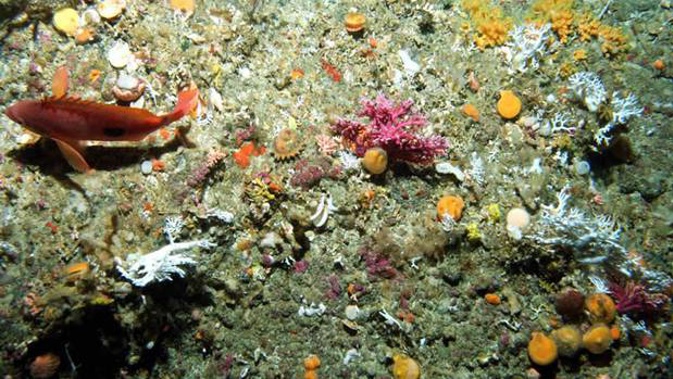
Kiwi scientists investigating the impacts of controversial seabed mining are about to simulate the effects themselves, in one of the most challenging underwater experiments Niwa has ever attempted.
Only two seabed ventures have ever been developed in New Zealand and both have been met with staunch opposition.
That was amid concern the operations would disturb sea life at their operation sites - and more widely through drifting plumes of sediment and other environmental effects.
In an MBIE-funded effort to learn more about the impacts, scientists will deploy at least nine high-tech instruments on the seabed on the Chatham Rise - the area off the Canterbury coast where one company has plans to mine phosphate.
Among the equipment, to be placed in water 500m deep, is an underwater glider, three undersea observational platforms known as "benthic landers", a multi-corer to take sediment samples, seabed moorings, water column sampling equipment, an underwater camera that will be towed above the seafloor and a "benthic disturber".
The dispersal of the plume will then be monitored, and surveys before and after the disturbance will measure the effects on the seabed animals.
Voyage leader and Niwa principal scientist Dr Malcolm Clark said some of the equipment has not been tried before in this situation and deploying so many instruments at once was "extraordinarily complex".
"However, this is very important work that will enable us to provide information about the nature and extent of impacts associated with human activities in the deep sea and the level of resilience of the organisms living there."
The data collected will be used to build up a picture of how the biological communities on the seabed may be affected by the sediment stirred up by mining, as well as bottom-trawl fishing.
Uncertainty about the effects of sediment plumes had contributed to applications for seabed mining being declined - and the plumes were also a big environmental concern for sustainable fisheries certification.
/arc-anglerfish-syd-prod-nzme.s3.amazonaws.com/public/D2EER4MFOVE4PB4SUGUS27VEMI.jpg)
Niwa's research vessel Tangaroa will lead the expedition. Photo / File
"These activities create plumes of sediment but we don't know how the sediment affects seabed life as it settles again on the seafloor, and how much deep-sea animals can withstand," Clark said.
"We are doing this experiment on a small scale on the Chatham Rise but it will give us a much better idea of how environmental managers and industry can work to mitigate larger-scale disturbance effects."
The benthic disturber was about 4.5m-long and 2.4m-wide and contained a pump that mixed sediment with water and turned it into a slurry as it was towed along.
The slurry was then pumped out a central chimney to create the plume, which would be tracked and monitored as it drifted and dispersed through the ocean. It was estimated the disturbance would take place over about half a square kilometre of seabed.
The benthic landers, which have been built by Niwa and not yet used at sea, would carry a variety of high-definition cameras, lights and instruments to record physical, chemical and biological activity.
Niwa's ocean glider and a modified acoustic towfish would follow research vessel Tangaroa, measuring turbidity and the density of the plume, while water samples from inside and outside the plume will be collected.
A towed camera would also record high-definition still images and video of the seafloor, which would be sampled by small coring and sled equipment.
Three seabed moorings were also being installed at an undisturbed control site, where they would remain for a year.
The information they record would be used for comparison with the disturbed area.
A lab-based programme would run alongside the work at sea that will provide further information on the resilience of the seabed ecosystem.
The research team planned to collect live sponges and corals and bring them back to a Niwa laboratory, where their resilience to various sediment loads will be tested.
"We will compare the measurements taken during the Chatham Rise disturbance experiment with a controlled experiment in the lab, which may be able to tell us the tipping point at which these communities either cope well or are significantly impacted," Clark said.
"The field and laboratory studies together will be a powerful combination to address when too much sediment is ecologically significant."
The collaborative project was the first of three surveys, with the monitoring to be repeated next year and in 2020 to measure longer-term effects and potential recovery of seabed communities.
Take your Radio, Podcasts and Music with you









